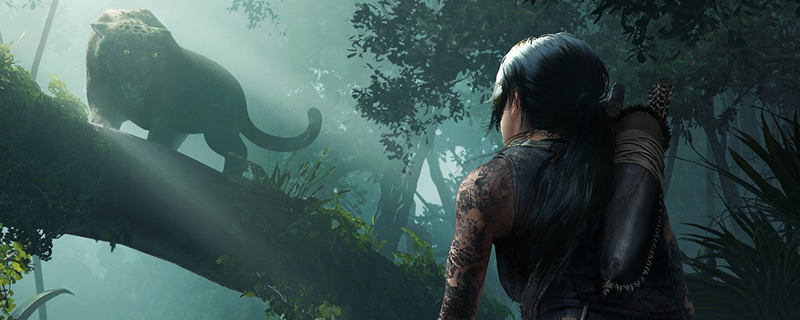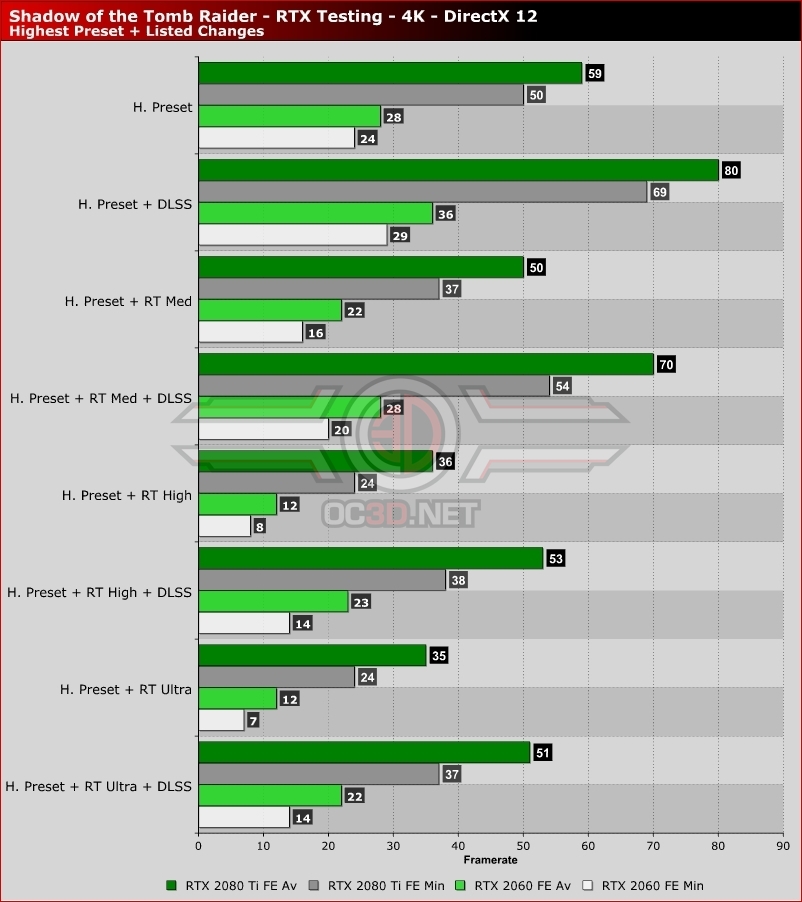Shadow of the Tomb Raider RTX Performance Review – Ray Tracing and DLSS Analysed
4K Performance – Benchmark Results
At 4K, raytraced shadows are a step too far for modern graphics hardware, at least when 60 FPS framerates are targetted. While our RTX 2080 Ti averaged over 60FPS with Ray Traced Shadows set to Medium while DLSS is enabled, we must remember that Medium settings mostly relies on the game’s standard shadows.Â
At 4K, it becomes harder to distinguish between DLSS on and Off, with many aspects of render images appearing sharper while some others are a little less detailed. Regardless, the framerate boosts offered by DLSS are more than worth the changes in image quality. For the RTX 2060, this is almost enough to push the game above 40 30FPS at all times, and enough to drive the game at over 4K 60FPS at all time using the game’s Highest Preset.Â
If you crank up ray tracing on the RTX 2080 Ti to Ultra and enable DLSS, 30 FPS framerates are possible in most of the game, but to be honest, we would prefer to play the game at lower settings and aim for a 60FPS target. It is ultimately player preference whether you want to play with better visuals and lower framerates or with higher framerates and lower-quality visuals.  Â
 Â




